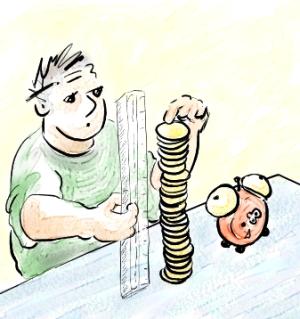
Plus Advent Calendar Door #14: What's average?
Most people have more than the average number of ears. This might seem odd, but it's true. The vast majority of people have two ears, but the few who have only one or none bring the average down to less than two. It's easy to illustrate this by imagining there are only five people in the world with one of them having only one ear. The average number of ears is
$$\frac{2+2+2+2+1}{5} = \frac{9}{5} = 1.8.$$
What's the best way of measuring a population's income?
The average (technically called the arithmetic mean) is computed by adding up the number of ears of all people in the world and then dividing by the total number of people. The example illustrates that the average isn't always the best measure to use when you want to make a wholesale statement about something. For example, a few super-high earners can drive up the average income in a population, giving the impression that people on the whole are much better off than they actually are.
But luckily, there are other measures you can use that might be more appropriate. One is the median. You compute it by listing all the numbers in question (ears, income, etc) in order and picking the middle one. For example, if there are five people earning £1000, £1000, £3000, £3500 and £4000 a month, then the median is £3000. It tells you that roughly half the people earn less than that and the other half more (if there were an even number of people, the median would be the number lying exactly half-way between the middle two — in other words, it would be the arithmetic mean of the middle two).
Alternatively, you could compute the mode. That's the number that appears most frequently in your list. In the example above the mode is £1000, telling you that most people in your list earn that amount. Or you might go for the midrange: add the smallest and the largest number and divide by two. In our example that gives (£1000+£4000)/2 = £2500. (Statisticians don't use the midrange very often though, partly because, like the arithmetic mean, it is easily skewed by outliers.)
So, next time you hear an average quoted in the news, keep in mind that it may be misleading.
You can find out more in the articles All about averages and Damn lies, or try our puzzle Meddling with averages.
Return to the Plus advent calendar 2016.
This article comes from our Maths in a minute library.